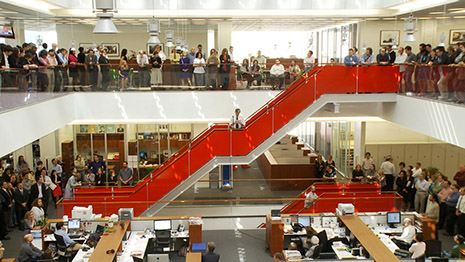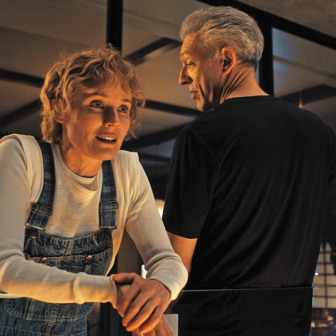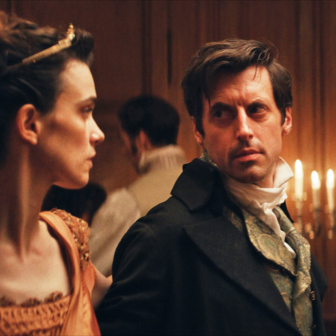SOME say that Page One, a lively, complex, searching documentary currently on cinema screens, is only for the dying generations of those who – in the teeth of galloping change for the public media – persist in loving newsprint. Against those voices, I can’t but remember others, which were heard predicting the death of cinema from the moment television arrived. Cinema survived, retreated on some fronts and advanced on others, morphed and proliferated, because there were always enough people who wanted to make it, and enough wanting to see it. Similarly, serious journalism does things nothing else can do, as its practitioners tell us in this film, and for that reason it has to stay – somehow navigating fierce opposing currents. It’s life and death; without the transmission and sharing of information that the ruling powers would rather you didn’t get, we can’t have liberal democracy. That’s not to say that we’ll always need newsprint; one good thing about Page One is that it puts the argument out there, and it should be taken up.
The film manifests a confidence and courage which border on the romantic; its makers (writer-producer Kate Novack, director-cinematographer Andrew Rossi) clearly love the kind of journalism to which the New York Times belongs, with serious, time-consuming investigation coming to the surface in long articles and series. There’s also a sense that a certain kind of loyalty is at work, that some film makers and some kinds of journalist are kindred, sharing obsessions. The Times was one of three papers which shared in WikiLeaks’s project on that murderous episode in Iraq, when innocent journalists themselves were wilfully killed in fire from an American helicopter; there’s a sequence here in which Julian Assange stakes out adjoining ethical territory. He can partner with journalism where there’s a link with his own activism, but he wants to be identified more as activist than as journalist; he says that while with activism you can see a clear pursuit of justice, the values of journalism are “more muddled.” Those words, however, help to mark out the Times’s territory from other parts of the print landscape, and the stances taken by its various section editors make it clear that while across America newspapers are going down like ninepins, this one has not only to survive in the days of WikiLeaks and Twitter, but to do so on its own terms.
Those terms are made clear by a few of the professionals, talking to camera from their desks, phones and computers. They know they’re embattled. They are followed through the year 2009, which begins with news of the widespread closures and layoffs; here, they must lose a hundred editorial staff. The media editor Bruce Headlam appears, the classically unglamorous newspaper man in shirtsleeves, deliberating on the Times’s part in the four-way link with WikiLeaks, Der Spiegel and the Guardian. We have to wonder why the old poster for Citizen Kane is there on his office wall – a French poster at that, with the legend l’un des dix meilleurs films du monde. Of course; but Kane tracks exactly the kind of newspaper project that the New York Times, and this film, indirectly but potently oppose: the mogul’s empire. The poster is there to affirm the continuing life of the press, to insist on its legend; and at points through the film, particularly in the meditations of the executive editor Bill Keller, we can wonder whether it is living, as it were, in the slipstream of its own legend.
Today’s Kane (still), Rupert Murdoch, has a brief speaking part; he’s seen commenting that it doesn’t matter if newspapers have to be read on iPads as long as people can still read them. Perhaps the film-makers included that clip to reinforce the sense of the other kind of power possible to newspapers, the kind the mogul himself can’t have: the collaborative liveliness of the newsroom itself. Against prophecies of doom, there’s the intense dynamic of the editorial meeting, where section editors fight for space on A1 – that’s the front page; and where it’s decided that the Times, for one, won’t fall for the pseudo-news of a phoney pull-out in Iraq, won’t give it the big headline Washington seems to ask for.
The action is centred on a handful of characters around the paper’s media desk. Young Tim Arango, who dreamt in his early youth of working for this newspaper, demands frontline journalism; he goes to Iraq, and soon becomes the Baghdad bureau chief. Brian Stelter, compulsively tweeting, is a young fat boy who loses ninety pounds through 2009, and tells everyone all about it on his blog. The main pursuit is of David Carr, who does the big story on corruption at the Chicago Tribune, and hunts out the dealings between CNN and Vice magazine. Carr is tall, gawky, gloomy and reedy-voiced; before entering journalism, at a later age than most, he was a drug addict, and then a single father on welfare, and he says that after all that nothing much can scare him.
It would have been good to meet more of the workers, women especially, and to see more of other editorial domains; but the focus on the media section has to do with the general overhanging threat.
Newspapers, they tell us, will be gone in five years from now. What will it be like without them? Will iPads and Kindles really do their jobs? It is not enough to insist that inter-networking, blogging and tweeting make everyone a potential publisher, and that they add up to a new kind of cultural democracy. What happens to craft and training, to the development of analysis, the language skills we use to extend our own understanding and others’, the expressive interactions between photography, cartooning and the printed word?
Toward the end of the film, National Public Radio is mentioned as a model for newspapers as advertising sources keep on drying up. NPR, with around 160 regional stations around the United States, is funded partly from federal government sources, partly by corporate and private philanthropy. (ABC News Radio picks up its excellent public affairs program All Things Considered, and NPR, like the ABC, comes under attack on issues of bias and prejudice from every side.) There’s nothing new in making independent critical journalism a philanthropic enterprise for enlightened benefactors, but its printed forms can’t be answerable to governments. At the end of Page One, with a high shot of that famous newsroom, the New York Times is sailing on, with a smaller crew and high bravado; the Grey Lady, as they call her, is both alive and aloof.
NOT being any kind of dance critic, I can only say of Pina that it’s completely mesmerising, a great tribute by her company to the late Pina Bausch. The familiar classical ballet repertoire contains nothing to prepare us for Bausch’s strenuous mini-dramas, devised for human bodies in space. As director, Wim Wenders gives each one its own stern clarity. Bausch wasn’t one for happy endings; her work is deeply and darkly European, haunted by memories of fascism. She devised the kinds of dance in which life and love are rebuked, admonished, called to order; one piece that sticks in the mind showed lovers being forced apart, their movements reduced to stiff puppetry, in a sequence that brought back the ultra-mechanical nihilism of the original Metropolis. The 3D glasses supplied at the cinema might be uncomfortable, but this film – like the recent work by Wenders’s compatriot Werner Herzog, Cave of Forgotten Dreams – makes glorious sense of 3D.
The Herzog film, seen earlier at this year’s film festivals, is currently showing on city circuits; and so, for those who might wish to feel the contrast between Pina Bausch’s kind of dance and others, is Frederic Wiseman’s La Danse, his long essay on the inner workings of the Paris Opera ballet.
For next time, after a shorter interval, I will consider Fred Schepisi’s film version of Patrick White’s The Eye of the Storm. It might be an idea not to read, or re-read, the novel before watching. •





